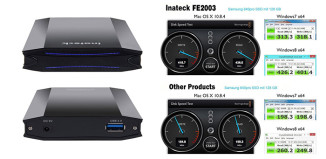[]1Firefox 4
Mozilla’s Firefox 4 was released in late March The release came nearly two years after Firefox 3.5 and three years after Firefox 3. Firefox 4 was an important release for Mozilla — perhaps the most important release since 1.0. The competition has never been so strong. We have been using the beta releases extensively and spent some time with the final release.
Look and Feel
Mozilla first started talking about Firefox 4.0 in July 2009. The early screenshot previews — featuring tabs on top, a la Chrome — were a radical departure at the time.
Although the comparisons to Chrome are unavoidable, I think that Firefox 4 improves upon Google’s minimalist design.
Tabs are on top, but the browser window is still easily draggable. Users won’t make the mistake of dragging a tab rather than the full window. Moreover, cycling through tabs is more elegant and less cluttered than either Safari 5 or Chrome 10.
By default, Mozilla has changed the location of the home button. It also added a new bookmark bar. Fortunately, these components can be customized and removed (simply right click on them and hit “customize”). Like Chrome, Firefox eschews the the status bar on the bottom of the screen, only using it as an overlay when needed. This adds a few more pixels of space to the viewing window.
Firefox 4 includes an innovative new tab grouping feature known as Panorama. Panorama started life as Tab Candy, an experimental feature introduced by former Mozilla Creative Lead Aza Raskin. It creates different groups of tabs and lets you switch easily between them. Panorama is a great feature for power users, but anyone who don’t want to use a grouping system can ignore it and never know the difference.
Speed
Firefox used to be the fastest browser on the block. Over the years, the program has become bloated. Increasingly, the speed factor in web browsers is less about the rendering engine and more about the JavaScript engine.
Firefox 4 claims to be up to six times faster than its predecessor. In our tests, load times did seem about that fast — though Google Chrome 10 still seems to bring up pages more quickly.
The speed increases aren’t merely limited to page load times, however. Firefox 4 starts up significantly faster on my Mac (an iMac with a 2.8GHz i7 and 12GB of RAM running Mac OS X 10.6.7) than its predecessor. In fact, in a timed test, Firefox 4 launched from dock to default homepage at nearly the exact same speed as Google Chrome 10.
Performance, Memory Usage, Stability
As a full-time Mac user since 2008, I’ve long had a love/hate relationship with Firefox. Certain websites (particularly corporate backend systems) just work better in the browser than in Safari. But Firefox has never been particularly well tuned to Mac OS X machines. Firefox 3 was a significant improvement, but frankly, Firefox has remained a memory hog.
The biggest problem with Firefox versions of the past — and this is true of both Mac OS X and Windows releases — is that the program has the tendency to leak memory. This problem only gets worse on systems with lots of add-ons installed and can be made worse still by plugins like Flash.
Mozilla has said that Firefox 4 consumes less memory and is more stable. I wanted to see if this was true. Using the Activity Monitor in Mac OS X, I tracked the amount of real memory, CPU utilization and CPU threads in Firefox 4, Firefox 3.6.15, Safari 5.0.4 and Chrome 10.0.6.448.151 stable.
First, the good news — in my tests, Firefox 4 consumes less memory and CPU cycles than Firefox 3.6.15. When adding in Flash and other plugin usage to the total memory footprint, only Google Chrome 10 performs better.
The bad news — and this is really for all four browser variants tested — is that the overall usage is still fairly high. The big culprit here is Adobe Flash. Improvements have been made on this front in Windows and with certain graphics chipsets on the Mac (my Radeon HD 4850 unfortunately, is not included), but Flash is the greatest cause of browser performance and memory usage issues.
So if Firefox 3.6.x takes up a lot of memory on your system, the improvements in Firefox 4 might not be significantly better.
Add-ons
Mozilla has restructured how its add-on system works. Add-on installation and browsing now takes place in a designated browser window, rather than a pop-up menu. This is much more easy on the eyes and makes finding and installing or removing add-ons and browser themes more fluid.
Most major Firefox add-ons now work with Firefox 4. Users may run into situations where an add-on is incompatible. But most developers seem to have answered the call. If your favorite add-on isn’t updated in the next week or two, it might be time to look for a replacement; it probably indicates developer abandonment.
Firefox is continuing to move towards lighter weight extensions like those for Google Chrome, Safari and Opera. These add-ons can be built using HTML, CSS and JavaScript and tend to use less memory and resources. They also tend to have less of an impact on overall browser performance and stability.
Still, at this stage, most major Firefox add-ons still use the traditional add-on API and require a browser restart when updated, installed or uninstalled.
I have long said that add-ons and extensions are Firefox’s greatest strength and its greatest weakness. The impact that the extensibility these add-ons added to the browser on overall user adoption cannot be understated. It’s equally true, however, that the performance impact some popular add-ons can have on the browser has hurt Firefox’s image as a whole.
Even with Chrome, users have to battle how many extensions are installed versus the performance impact on the browser. It’s a tough line to straddle between utility and performance. But from what I understand about the Firefox add-on APIs and toolkits, it is an area Mozilla has spent a lot of time working to make better.
- Support for CSS animations
- Better visibility for the Do-Not-Track header preference
- Improved canvas and JavaScript support
- Better standards support for canvas, HTML5, XHR, MathML and SMIL
- Better tuned HTTP idle connection logic
Firefox 5
Just three months after the release of Firefox 4, Mozilla has pushed out Firefox 5 for the desktop and Android devices.
That’s a big change from the two years it took to move from Firefox 3.5 to Firefox 4. Firefox 5 is part of Mozilla’s new rapid release development cycle. This cycle, which is more akin to what Google does with its Chrome browser, promises faster, more iterative updates. With any luck, Mozilla expects Firefox to hit version 7 by the end of the year.
Visually, Firefox 5 looks identical to Firefox 4. Everything we said about Firefox 4 applies to this release.
Rather than reinventing the wheel, Mozilla has added better support for web standards, fixed some bugs, made performance enhancements and added a few additional code touches.
The big new features, courtesy of the release notes include:
In another move that mimics what Google does with Chrome, Mozilla now has more options for users who want to partake in the beta and testing process. In addition to nightly and beta channel releases, users can also opt to use the new Aurora channel, which will give users access to features before they hit beta, but with limited QA testing that you don’t get with nightly releases. This is akin to Chrome’s developer channel.
In our tests, Firefox 5 is fast — even faster than Firefox 4. We’re also loving the more frequent update cycle, because it means that the browser will be more able to support the latest and greatest browser features.
To update to the latest Firefox, click on the “check for updates” button in the “About Firefox” menu. In the comments, let us know your thoughts of the new Firefox and its more frequent release cycle.








